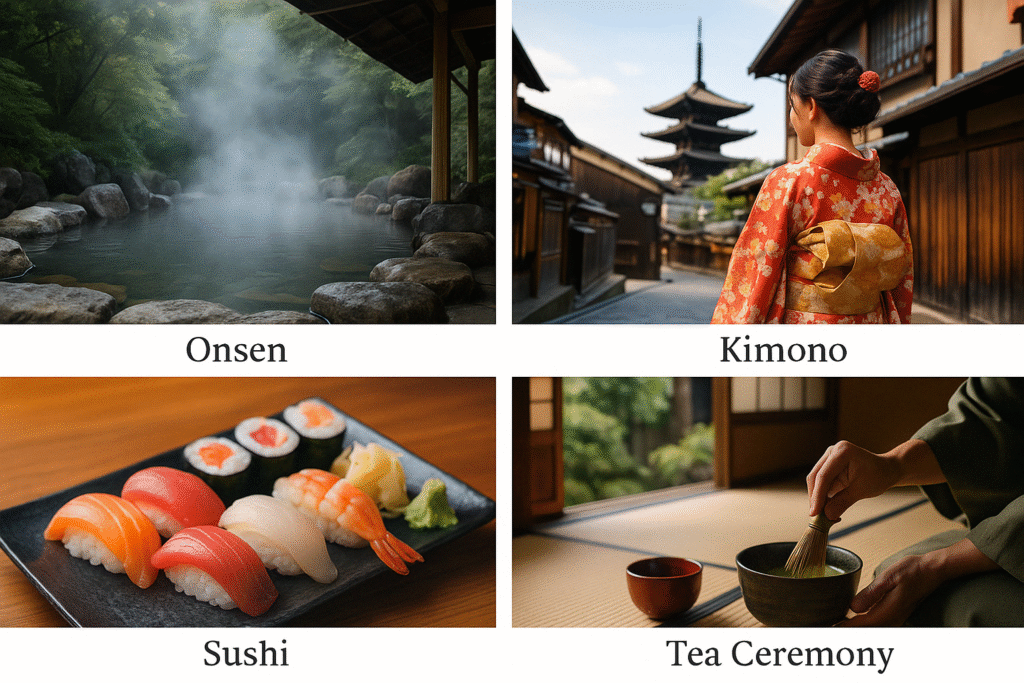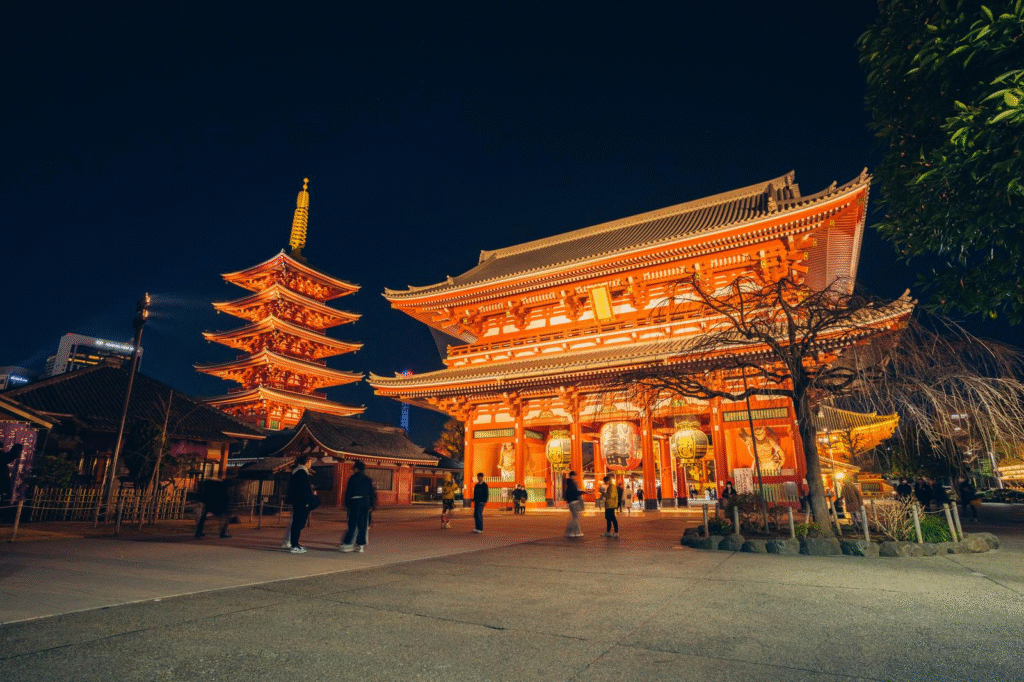Visiting a Japanese onsen is a one-of-a-kind cultural experience — but for first-timers, it can feel a bit confusing.
In this article, we’ll walk you through everything you need to know, from essential etiquette to step-by-step instructions, so you can enjoy hot springs like a local.
Whether you’re planning a day trip or a stay at a traditional ryokan, this guide is here to help you relax with confidence.
Quick Navigation
Introduction – What Is a Japanese Onsen?
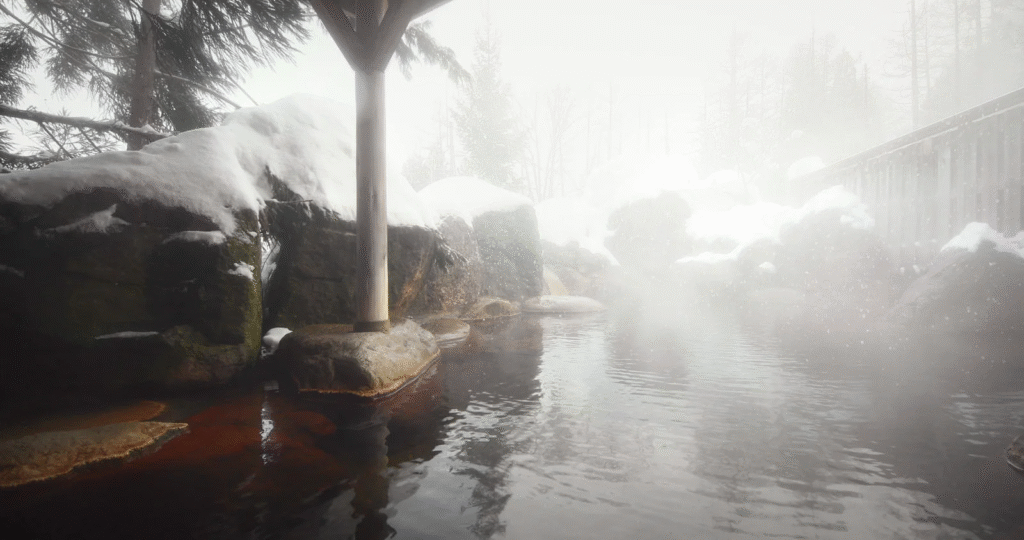
Japan’s hot springs, known as onsen, are more than just places to take a bath.
They’re deeply rooted in Japanese culture and offer a unique chance to relax, reset, and experience something truly local.
For first-time visitors, they may seem a bit mysterious — but once you understand the basics, you’ll see why onsen are such a beloved part of daily life in Japan.
A Symbol of Relaxation in Japanese Culture
Onsen have long been a way for people in Japan to unwind, both physically and mentally.
The mineral-rich water is believed to have health benefits, and the calm setting allows you to step away from the busy pace of travel or city life.
Spending time in an onsen isn’t just about bathing — it’s about slowing down and enjoying the moment.
Not Just for Hotel Guests — Day-Use Onsen Are Available Too
You don’t have to stay overnight at a ryokan or resort to enjoy an onsen.
Many facilities offer day-use options, where you can simply drop in, soak for an hour or two, and continue your journey.
This makes it easy for travelers with limited time to still enjoy a relaxing hot spring experience.
“It Seems Complicated…” – A Common Feeling Among Visitors
It’s normal to feel a little nervous about visiting an onsen for the first time.
There are unique customs and unwritten rules that can feel intimidating, especially if you’re from a different culture.
But don’t worry — this guide will walk you through everything you need to know, so you can enjoy onsen just like a local.
What You Should Know Before Visiting an Onsen
Tattoos Are Often Not Allowed — Always Check in Advance
In many traditional onsen, visible tattoos are not allowed.
This is mainly due to cultural associations with organized crime in Japan.
Even if your tattoo is small or decorative, some facilities may refuse entry without exception.
That said, rules are slowly changing, and some onsen now allow tattoos — especially those used to welcoming international visitors.
To avoid any issues, it’s very important to check in advance.
You can also cover tattoos with a waterproof patch or choose private onsen rooms (kashikiri), where rules are more relaxed.
Wash Your Body Thoroughly Before Entering the Bath
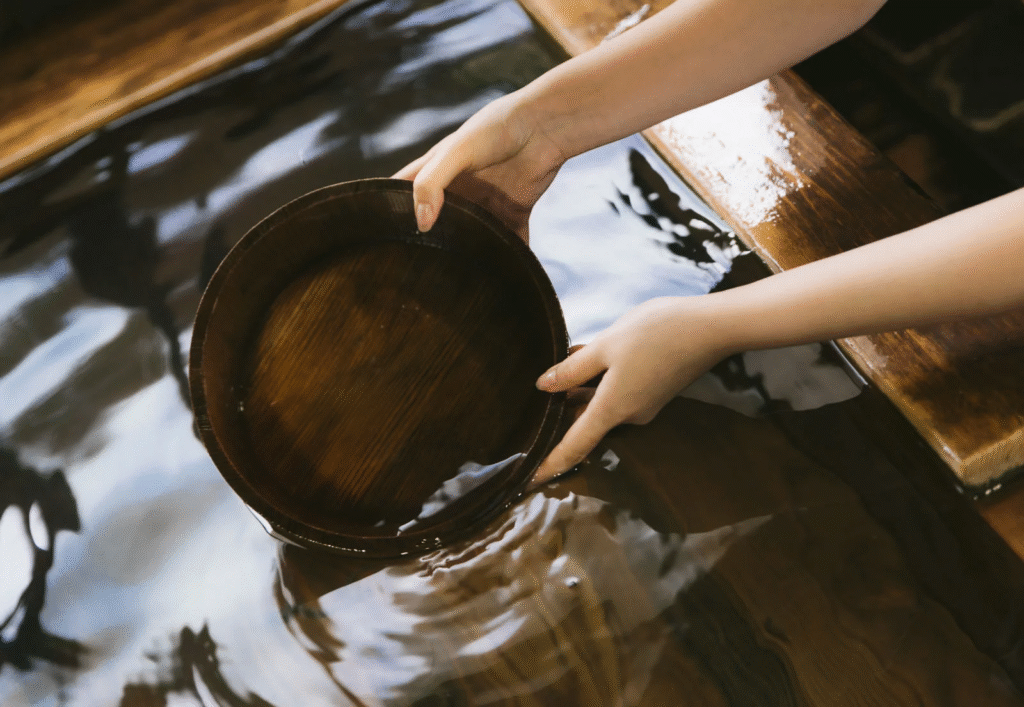
This is one of the most important onsen rules — and one that must be followed.
Before you get into the bath, you must wash your entire body at the washing station.
This includes rinsing your hair and body with a shower or a bucket (kakeyu), even if you’re not using soap.
The purpose of this is to keep the shared bathwater clean for everyone.
Skipping this step is considered extremely rude and unhygienic.
No Mixed Bathing – Baths Are Usually Separated by Gender
In most public onsen, men and women bathe separately.
Mixed-gender bathing (konyoku) is extremely rare and usually only available at certain traditional or private hot springs.
When you enter an onsen, look for the curtain or sign:
- Blue (男) is for men
- Red (女) is for women
If you’re unsure, just ask the staff or check the signage carefully.
Changing rooms and bathing areas are clearly divided, so you can relax and enjoy the experience comfortably and respectfully.
How to Use a Japanese Onsen: Step-by-Step Guide
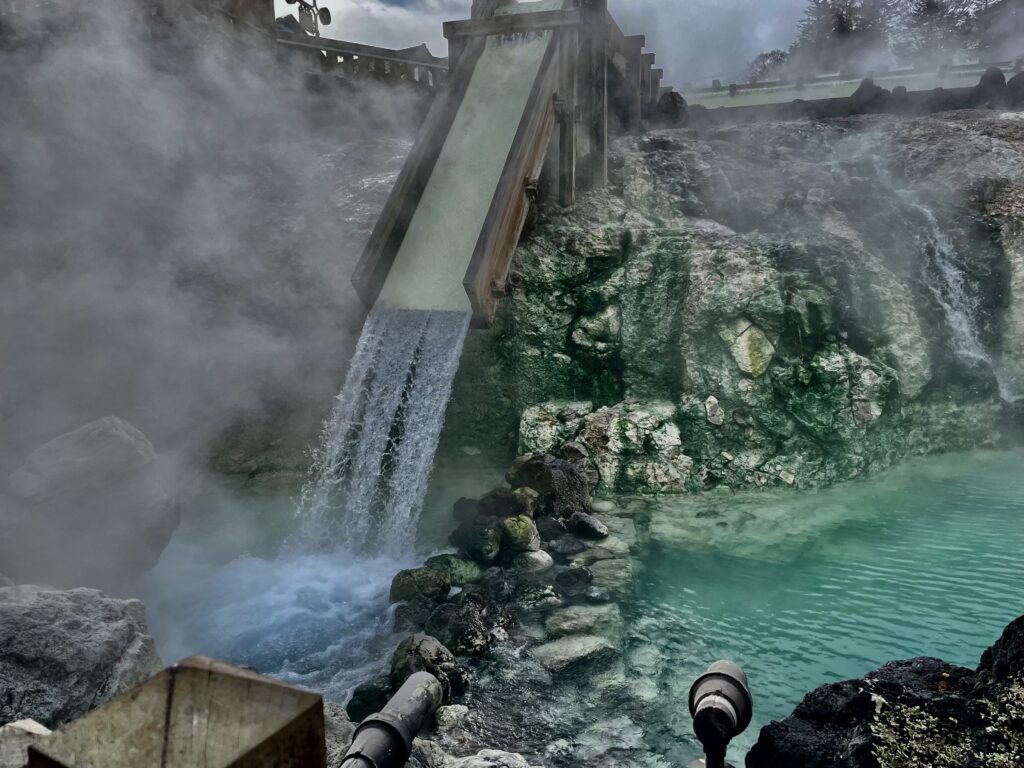
If it’s your first time visiting an onsen, don’t worry — the process is easy once you know the steps.
Here’s a simple guide to help you enjoy your hot spring experience with confidence and good manners.
Step 1: Take Off Your Shoes and Store Them
When you enter the onsen building, remove your shoes at the entrance.
There are usually small lockers or shelves where you can store them.
Then head to the front desk or ticket machine to pay the entrance fee.
Step 2: Change Clothes in the Dressing Room
In the locker room (called the datsuijo), take off all your clothes — yes, you bathe completely nude.
Place your clothes and belongings in a locker or basket.
Important: Do not bring large towels into the bath. Only use a small towel if needed, and keep it out of the water.
Step 3: Wash and Rinse Thoroughly at the Washing Area
Before entering the bath, you must wash your body completely at the shower stations.
Sit on a small stool and use soap and shampoo to clean yourself.
Make sure to rinse off all the soap before moving to the hot spring.
This step keeps the bath clean for everyone — it’s not optional!
Step 4: Enter the Bath Quietly and Relax
Once clean, gently step into the hot bath and take your time to relax.
Don’t swim, splash, or talk loudly — the atmosphere is meant to be peaceful.
Many people simply soak in silence and enjoy the warmth.
Step 5: Rehydrate and Rest After Bathing
After getting out, use a towel to dry off before returning to the changing room.
Drink some water or relax in the lounge area.
Some people even take a short break and then go for a second soak — that’s totally okay!
Common Onsen Mistakes to Avoid
Onsen are places for relaxation, but they also come with a few important rules.
Here are some common mistakes visitors make — and how to avoid them so you can enjoy your experience with confidence.
Keep Your Hair Out of the Water
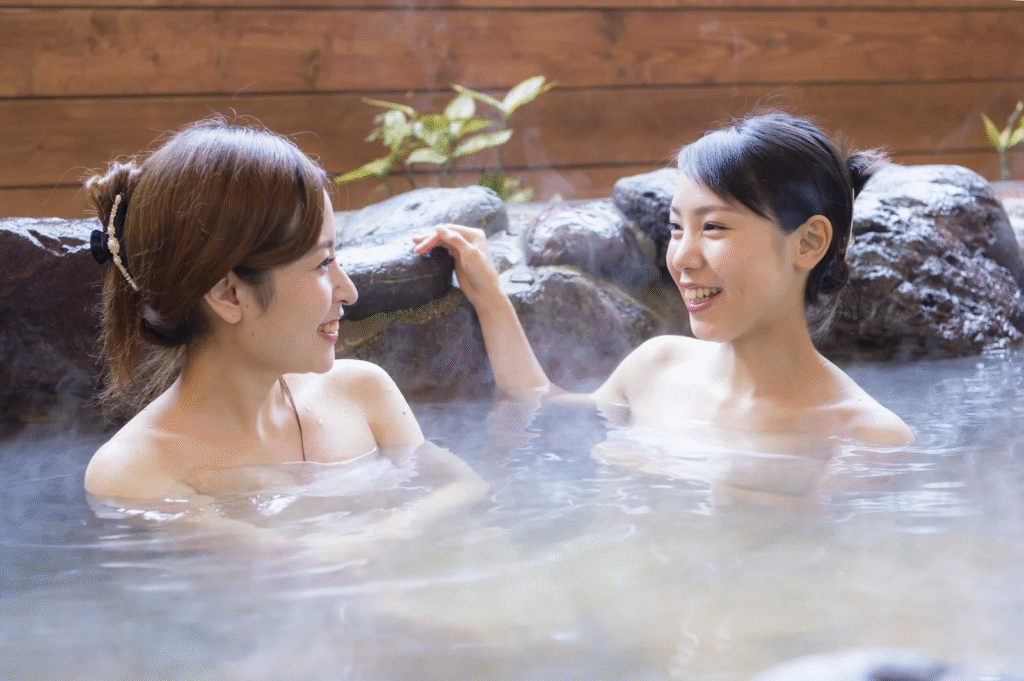
If you have long hair, tie it up before entering the bath.
Letting hair float in the water is considered unhygienic and disrespectful to others.
Most onsen provide hair ties or sell them at the front desk if you forget.
No Cameras or Phones Inside the Bath Area
Taking photos or using your phone is strictly prohibited in the bathing area.
This is to protect everyone’s privacy.
Even if the bath looks beautiful, please keep your camera and phone out of sight while inside.
Tattoos? Use a Cover or Try a Private Onsen
As mentioned earlier, many onsen still have rules against visible tattoos.
If you have one, you can use a tattoo cover sticker (available online or at some onsen), or look for a facility with private baths (kashikiri) where tattoo rules are more relaxed.
Checking in advance will save you time and avoid disappointment.
Recommended Onsen for First-Time Visitors
If you’re new to onsen, it’s a good idea to start with places that are friendly to beginners and foreign travelers.
Around the Fuji Five Lakes area, there are several great day-use hot springs where you can enjoy beautiful views and a relaxed atmosphere.
Here are two local favorites:
Fujiyama Onsen (near Fuji-Q Highland)
A spacious, modern onsen with indoor and outdoor baths, sauna facilities, and English guidance available. Great for those staying near Kawaguchiko.
Benifuji no Yu (Lake Yamanaka area)
This peaceful hot spring offers stunning views of Mt. Fuji from its open-air bath, especially at sunset. It’s popular with locals and offers a calm, traditional atmosphere.
Both of these are easy to access by bus or car and are perfect for a stress-free first onsen experience.
Conclusion – Enjoy Japanese Onsen with Confidence
Onsen may seem full of rules at first, but once you understand the basics, you’ll see how simple and enjoyable the experience really is.
Just follow the main steps, respect the shared space, and let the hot spring water do its magic.
Whether you’re visiting a day-use bath or staying overnight at a ryokan, soaking in an onsen is one of the most relaxing and authentic parts of Japanese culture.
Enjoy it like a local — and your trip to Japan will be all the more memorable.
Want to learn more about the basics of traveling in Japan? Check out our other Japan Travel Basics articles here.
👉 “How to Use Public Transportation in Japan: A Simple Guide for First-Time Visitors”
👉 “Mastering Japanese Etiquette: Essential Manners for Respectful Travelers”
👉 Mt. Fuji Area Onsen Guide – Where to Enjoy Hot Springs Like a Local

